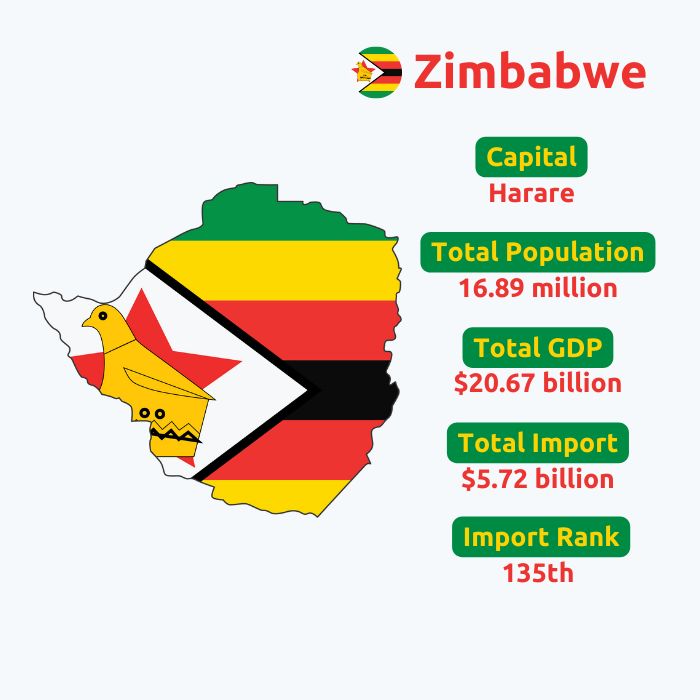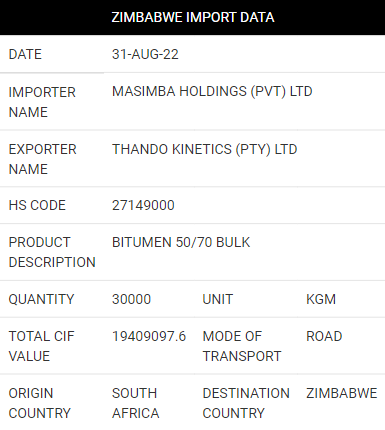Zimbabwe Import Data
The Republic of Zimbabwe is another name for Zimbabwe. Zimbabwe is a landlocked nation that is situated between the Limpopo and Zambezi Rivers in Southeast Africa. The nation borders several other nations, including Mozambique, Zambia, Botswana, and South Africa. There are sixteen languages spoken by people in Zimbabwe. Zimbabwe's economy is ranked 98th out of all the nations with the most complex economies by ECI. Based on the data about imports, Zimbabwe ranked 115th out of 226 nations in terms of total imports. Zimbabwe, a landlocked country located in Southern Africa, is known for its diverse economy and trade relationships with various countries around the world. As a developing nation, Zimbabwe heavily relies on imports to meet its domestic demands and foster economic growth. To effectively analyze and understand the country's import trends, Zimbabwe's import data plays a crucial role.
According to Zimbabwe's import data, Zimbabwe imported goods worth a total of $9.2 billion in 2023. In 2023, Zimbabwe's imports of goods rose by 7% in comparison to the previous year. Zimbabwe’s biggest exports are mineral fuels and oils, while South Africa is the biggest import partner of Zimbabwe. The total GDP of Zimbabwe is $73 billion, with a GDP import share of 37%. Zimbabwe is a part of major trading blocs such as SADC and AFCFTA. Let us explore the significance of Zimbabwe's import data in 2023 and how it can aid businesses and policymakers in making informed decisions.





